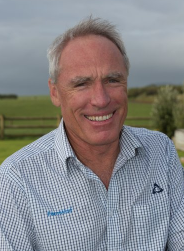 By Neil Smith, FarmWise Consultant
By Neil Smith, FarmWise Consultant
OAD milking in these Northland farms have lifted profitability through increased milk and stock income, and provided savings in labour and animal health expenditure.
Along with this, there has also been improved reproductive performance, with lower empty rates and improved 6 week in-calf rates. Cow health problems such as lameness and mastitis have also declined in prominence.
OAD has made farming more enjoyable, reduced workload and allowed older farmers to continue farming.
The biggest gains have been for hilly farms where stock have long walks. On some days, cows can walk 4 kilometres from cowshed to paddock. On farms which employed a 2AD system, cows were spending up to 8 hours walking and at the cowshed, meaning they were worn out. The move to OAD changed that, with cows spending more time grazing and using less energy walking.
Before going OAD many of these farms had poor herd reproduction, high levels of lameness, empty rates of 25%, 6 week in-calf rates of 50% and 30% of the milking cows lame.
OAD has had an immediate effect in these situations, reducing lameness and improving reproductive performance considerably within 12 months. Over several seasons of OAD, these farms are now achieving empty rates of 10% and 6 week in-calf rates of 85%.
Where there has been big improvement in herd reproductive performance, milk production has also increased with more cows in milk earlier in the season and longer lactation days. Milk curves for these farms have tended to flatten out in the spring with monthly production from September to December being very similar.
The trend to go OAD year round has also been positive on the less physically demanding farms.
The gains have not been as big, but improvements in milk production have been achieved through more condensed calving. There are OAD farms now with 9 week mating and empty rates below 10%.
Some farmers have made the move to OAD year round after using the system in previous seasons at mating and from Christmas onwards. The benefits that were achieved from using OAD in these periods were positive enough to convince them to go OAD throughout the whole year.
Others have made the change from 2AD to OAD in the one season, convinced by the results farmers in similar situations were achieving going OAD.
Although there are benefits to be gained from OAD, there are number of things to consider before changing:
- There will be a drop in total milk production in some situations. This has to be taken into consideration before going OAD.
- Depending on the farm, the full benefits of OAD may take up to five years.
- If a herd has a mastitis and high SCC problem, then this needs to be sorted before going OAD.
- Although most dairy breeds can cope with OAD, there will be cows in each herd that will not adapt to OAD.
- OAD cows need to be fed at the same level as they are on a 2AD system throughout the milking period.
- Feed demand will increase in the spring due to a faster calving.
- Milking time will increase due to the high volumes.
- Heat detection and AB programs have to be planned around OAD milking.




